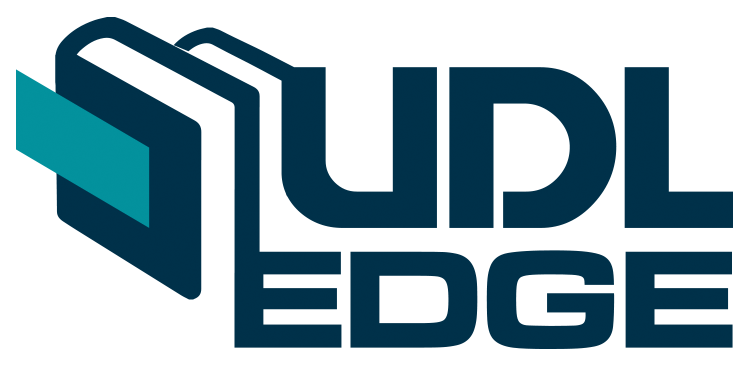Uruvaka aṇi: Arapu maṟṟum Tamiḻ moḻikaḷukkiṭaiyilāṉa ōr oppīṭṭu āyvu [The art of metaphor: a contrastive study between Arabic and Tamil]
உருவக அணி: அரபு மற்றும் தமிழ் மொழிகளுக்கிடையிலான ஓர் ஒப்பீட்டு ஆய்வு
Keywords:
ʾIstiʿārah, Uruwaha Ani, Allegory, the linked, linked to, இஸ்திஆரா, உருவக அணி, ஆகுபெயர், உவமானம், உவமேயம்Abstract
Metaphor is regarded as one of the most important tools in the literature of any language because it stimulates the imagination for the analysis of literary works. In Arabic rhetoric, this literary device is known as ʾIstiʿārah, and in Tamil grammar, it is defined as Uruwaha Ani. This study compares the background, definition, and classification of this concept in both languages. This study discovered that the two discourses have different backgrounds, in that ʾIstiʿārah in Arabic is based on the concept of Majāz (Allegory) and Uruwaha Ani in Tamil is seen as the developmental stage of simile. According to the definition of ʾIstiʿārah, it requires only the linked to (the borrowed to - المستعار له) or the linked (the borrowed-from - المستعار منه) to be mentioned in the given examples. Thus, in Tamil Uruwaha Ani, when only the linked to (Uwameyam) or the linked (Uwamanam) is mentioned, it coincides with the ʾIstiʿārah discourse. The study also discovered that Uruwaha Ani differs from ʾIstiʿārah, in the way it handles phrases that contain both linked to and the linked, while the Arabic rhetoric considers it as a type of smile called ‘effective simile’ (التشبيه البليغ). Although both ideologies have different classifications, some classifications of each can be found in the illustrative examples of the other language.
[உருவகமானது (Metaphor) இலக்கியப் படைப்புக்களுக்கு கற்பனைத் திறனை மேம்படுத்துவதனால், அனைத்து மொழி இலக்கியங்களிலும் முதன்மையான கருவியாக நோக்கப்படுகின்றது. இக்கருத்தியல் அரபு மொழி சொல்லாட்சிக் கலையில் (Arabic rhetoric) இஸ்திஆரா என்பதாகவும், தமிழ் மொழி அணி இலக்கணத்தில் உருவக அணி எனவும் பிரயோகிக்கப்படுகின்றது. குறித்த இரு மொழிகளிலும் இக்கருத்தியல் கொண்டுள்ள பின்னணி, அதற்கான வரைவிலக்கணங்கள் மற்றும் வகைப்பாடுகள் தொடர்பாக இந்த ஆய்வு ஒப்பீடு செய்கின்றது. அரபு மொழியில் இஸ்திஆரா என்பது மஜாஸ் (Allegory – ஆகுபெயர்) பாடப்பரப்பில் ஓரு அலகாகவும், தமிழ் மொழயில் உருவகமானது உவமை அணியின் வளர்ச்சி நிலையாகவும் நோக்கப்படுகின்றன என்ற வகையில் இரண்டு கருத்தியல்களின் பின்புலம் வேறுபடுகின்றது என்று இவ்வாய்வு கண்டறிந்துள்ளது. இஸ்திஆராவின் வரைவிலக்கணத்தின் படி, உவமானம் (المستعار منه) அல்லது உவமேயம் (المستعار له) மாத்திரமே குறித்த உதாரணத்தில் இடம் பெற்று வரும். இவ்வாறு தமிழ் உருவகத்தில் உவமானம் அல்லது உவமேயம் மாத்திரம் குறிப்பிடப்பட்டு வரும் போது இஸ்திஆரா எண்ணக்கருவுடன் உடன்பட்டுச் செல்கின்று. அதே வேளை, தமிழ் இலக்கணமானது உவமை உருபின்றி, உவமானம், உவமேயம் இரண்டும் குறிப்பிடப்பட்டிருப்பதையும் உருவகம் எனக்கொள்ளும் என்ற வகையில் இஸ்திஆராவில் இருந்து வேறுபடுகின்றது என்பதும், இதனை அரபு சொல்லாட்சிக்கலை உவமை அணியின் வகைகளில் ஒன்றான தஷ்பீஹ் பலீஃ (Effective Simile) எனக் கருதுகி்றது என்பதும் ஆய்வின் முக்கிய கண்டறிதல்களாகும். இரு கருத்தியல்களும் பிரத்தியேகமான வகைப்பாடுகளைக் கொண்டிருந்த போதிலும், அவற்றின் சிலவற்றை மற்ற மொழியின் உதாரணப் பயன்பாடுகளில் கண்டுகொள்ள முடிந்தன.]
References
al Maidani, A. (1996). al Balagha al Arabiyya (1 ed.). Dimeshq: Dar al qalam.
Abdul Raof, H. (2006). Arabic Rhetoric: A Pragmaic Analysis (1 ed.). New York: Routledge.
ManiMegla. (2021, August 04). Ani Ilakkanam. Retrieved October 10, 2022, from Ninaivu Koorha: https://ninaivukurgatamil.blogspot.com/2021/09/ani-tamil-illakkanam.html
al Jarim, A., & Ameen, M. (1998). al Balaghatul Waaliha. Cairo: Dar al maarif.
al Juwaini, M. (2002). al Balaghatul Arabiyya. Alexandria: Manshaat al maarif.
Grey, W. (2000). Metaphor and Meaning. Minerva, 4.
al Hashimi, A. (1999). Jawahirul Balagha. Bairut: al Maktabatul asriyya.
Atiq, A. (1985). Fi al Balaghatil Arabiyya. Bairut: Dar al Nahlat al arabiyya.
al Maraghi, A. (1993). Uloom al Balgha (3 ed.). Bairut: Dar al Kutub al Ilmiyya.
al Say'eedi, A. (2005). Buhyatul ieelah (7 ed.). Bairut: Maktabatul Aadab.
Mohammed Hafeez, M. (2022). The Effectiveness of Eloquent Simile in Forming the Poetic Images: Shawqi’s Nationalistic Poems as a Model. Al-Zahra: Journal for Islamic and Arabic Studies, 19(1). doi:10.15408/zr.v19i1.25232
Mukhtar, M. (2013). Ilmul Bayan al Muyassar (1 ed.). Taman Batucave: Maktabatu haji abdul majeed.
al Janaji, H. (2006). al Balaghatussafiya. Cairo: al Makatabul Azhariyya.
Pothu Nalam. (n.d.). Retrieved October 10, 2022, from Ani Ilakkanam: https://www.pothunalam.com/%E0%AE%A4%E0%AE%AE%E0%AE%BF%E0%AE%B4%E0%AF%8D/ani-ilakkanam/
Kandawanam, K. (2002). Kawithai Marafu (1 ed.). Channai: Kandalaham.
Kumar, I. (2019). Tolkaappiyam Korippidum Adippadai Ani Ilakkiyam. Shanlax International Journal of Arts, Science & Humanities, 3(3). Retrieved from http://www.shanlaxjournals.in/pdf/TS/V3N3/ts_v3_n3_i2_011.pdf
Sundhara mayil, I. S. (2020, July 20). Thillai Siwakami Annai Pillaith Tamilil Anikalan. Retrieved October 2022, 18, from Padhivuhal: https://www.geotamil.com/index.php/2021-02-11-18-03-56/6032-2020-07-01-15-55-15
Kumarasuwami, R. (1926). Tandiyalankaaram (2 ed.). Retrieved from https://noolaham.net/project/50/4930/4930.pdf
Kailaasapadhi, K., & Murukaiyan, E. (2000). Kavithai Nayam. Chennai: Kalachuvadu Publications.
Nurbayan, Y. (2019). Metaphors in the Quran and its translation accuracy in Indonesian. Indonesian Journal of Applied Linguistics, 8(3), 710-715. doi:10.17509/ijal.v8i3.15550
Abdulraheem , A., & Fareh, S. (2021). Weather-Related Metaphors in English and Arabic: A Contrastive. International Journal of Arabic-English Studies (IJAES), 21(1), 7-28. doi:https://doi.org/10.33806/ijaes2000.21.1.1
Mahsoom, M., Fasil Begam, A., Hafees, M., & Sameera, A. (2021). The Analogy between Arabic and Tamil Languages. Proceedings of 8th International Symposium, FIA, SEUSL (pp. 502-526). Olivil: Faculy of Arabic Language & Islamic studies, SEUSL. Retrieved from http://ir.lib.seu.ac.lk/bitstream/123456789/5670/1/Finalized%20Proceedings%202021%20-%2010.8.2021%20-%20Page%20503-527.pdf
Published
 Abstract Display: 138
Abstract Display: 138  PDF Downloads: 326
PDF Downloads: 326 













 This work is licensed under a
This work is licensed under a